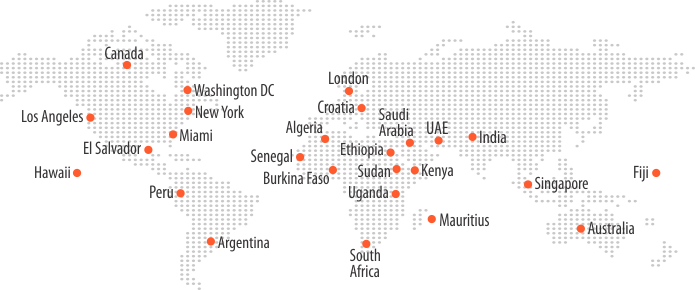AI-Driven Next-Gen Traffic Monitoring Solution

Artificial Intelligence Enables Fast and Secure Network Performance in Telcos
Telecom regulators face many difficulties while handling multiple operators in this fiercely competitive environment. Telecom operators are moving towards bulky technologies to meet ever-growing customer demands. This requires regulators across the world to embrace emerging technologies like AI to protect the interests of both service providers and consumers.
AI can help regulators to optimize networks and enable exceptional customer experience with efficient fraud protection, dispute management, and detailed reporting and analytics. Networks are becoming more sophisticated while their management systems still constitute manual and repetitive tasks. AI helps regulators to keep operators informed by proactively monitoring network performance and quickly detecting causes of errors.
The efforts of AI can be boosted further with a complementary technology known as Network Function Virtualization (NFV). With the help of AI, it can avert unnecessary traffic overload by channeling traffic through virtual machines. This significantly reduces the need for custom hardware and human intervention.
To leverage its advantages like increased network efficiency and intelligent predictive maintenance, the telecom industry has already started investing in AI. The global telecom investment in AI software is projected to reach $36.7 billion per year by 2025.
Let’s explore how AI can be leveraged in Telecom Traffic Monitoring Systems (TTMS) for network optimization.
Key Drivers for AI-Powered Traffic Monitoring and Network Behavior Analysis
Total mobile data traffic, excluding traffic generated by Fixed Wireless Access, is projected to reach 237EB per month by the end of 2026. This number is five times the size of traffic registered at the end of 2020. With the deployment of the 5G network, the industry has forecasted exponential growth of traffic. Shortly, intelligent machines, bots, autonomous vehicles, and drones will join the list alongside humans. However, AI will aid regulators to be more agile and software-centric in their roles.
Here are the key value drivers for an AI-based holistic approach to traffic monitoring and network analysis:
Process Automation
The main benefit of process automation is cost reduction, but regulators are increasingly looking at opportunities to drive proactive security from it. Software-Defined Networks (SDN) and IT systems like NFV play a key role in increasing the efficiency and agility of the network. They will act as enablers for the introduction of AI and ML in traffic monitoring.
Traditional automation can be used to reduce error rates in business processes. Whereas RPA can ensure improved quality of network and compliance with low up-front and maintenance costs.
Analytics And Virtualization
Analytics-based insights and virtualized networks are the most crucial drivers for the innovative capabilities of AI. The exponential growth of huge data sets may seem daunting, but AI makes use of each data point for business and network performance analytics. Data can be of:
- Billing data
- End-user network
- Service usage
- Device types and usage trends
- Location data
- Software usage
Each data point can have a substantial impact on the way network density, speed, and quality are handled. AI’s edge computing and rapid processing capabilities make it the perfect tool for operationalizing millions of hourly connections.
Advanced Security Intelligence
A holistic approach to advanced security intelligence can help drive operational excellence, improved customer experience, and maximum revenue. Apart from network monitoring, it has many applications in network operations and behavior. This includes network capacity planning, optimization in real time, protection, and fault detection. Furthermore, AI enables preventive and corrective maintenance approaches for telecom infrastructure.
Self-Optimizing Networks (SONs)
SONs are the networks that have AI solutions integrated into their maintenance and optimization processes. SON dynamically manages traffic by monitoring and analyzing network performance. It also allocates traffic for regions, time zones, and during load spikes. SONs utilize traffic data available to the NSP to automate analysis and decision-making tasks in large networks. Three fundamental characteristics of the SON framework include:
- Self-configuration: aims at automating configuration procedure with the help of software and network data.
- Self-optimization: automatically tunes the network based on performance analytics.
- Self-healing: automatically detects network issues and solves them.
Network Behavior Anomaly Detection
With the onset of Industry 4.0 and 5G networks, it will become difficult to manage a large amount of data received from complex systems. AI coupled with Big Data becomes essential to extract insights from the variations of thousands of distinct performance indicators.
Thankfully, many existing use cases of AI in telecom analytics provide the solid groundwork and smart KPIs to estimate AI’s efficiency in anomaly detection. AI-based threat analytics can be used to achieve optimal network anomaly detection by improving essential areas, such as:
- Reducing turnover time for errors like a sudden increase in call drops in a network or spike in base station load
- Ensuring high performance of solutions
- Predicting and reporting security threats
Efficiently manage and optimize your network with our TTMS
AI-driven intelligent solutions like TTMS can easily monitor operator networks for any unusual behaviors. AI enables automation, deep learning, analytics, and virtualization that opens endless opportunities for network analysis and traffic monitoring. From ensuring compliance to fraud management, to predictive maintenance, AI helps to solve critical network problems.
Panamax’s TTMS enables a holistic approach to traffic monitoring that helps the regulators overcome challenges of liaising with multiple operators.
Related Posts
Combating Telecom Fraud With Artificial Intelligence
Top 6 Trends In Cloud Services That Are Shaping Businesses






